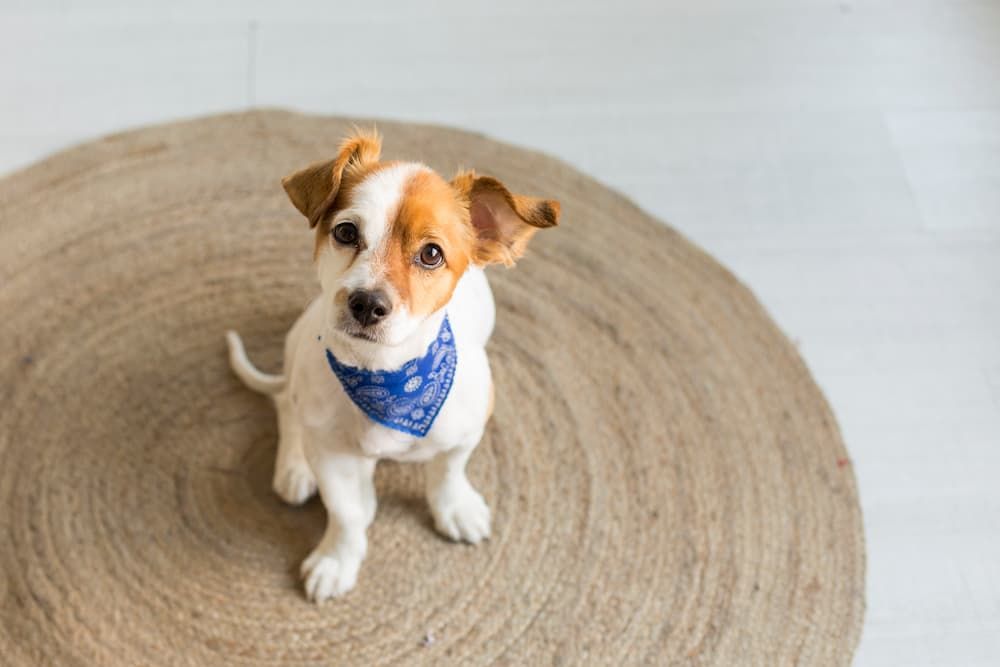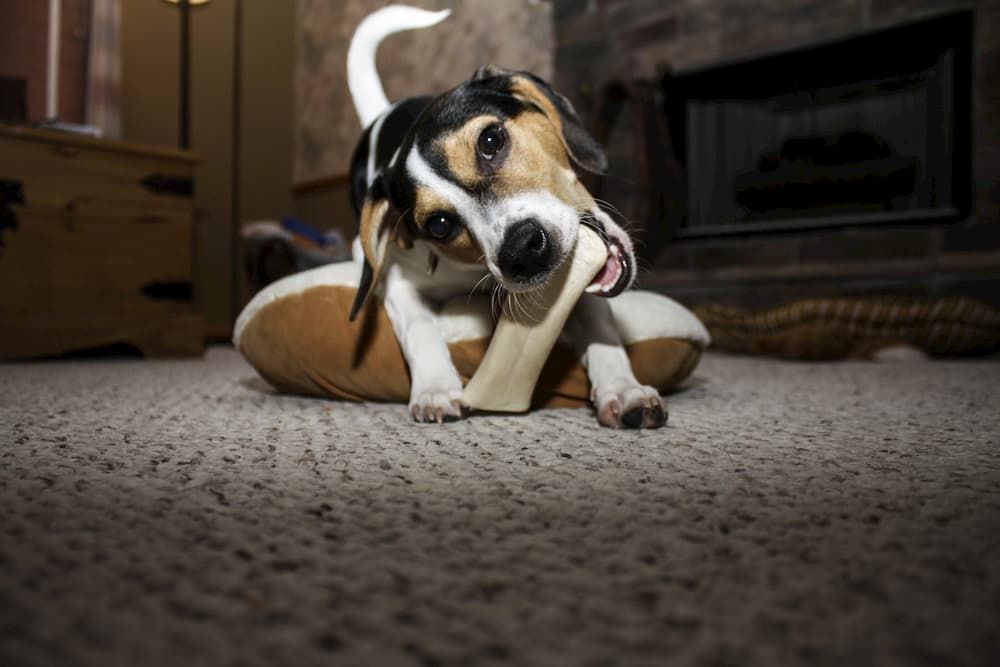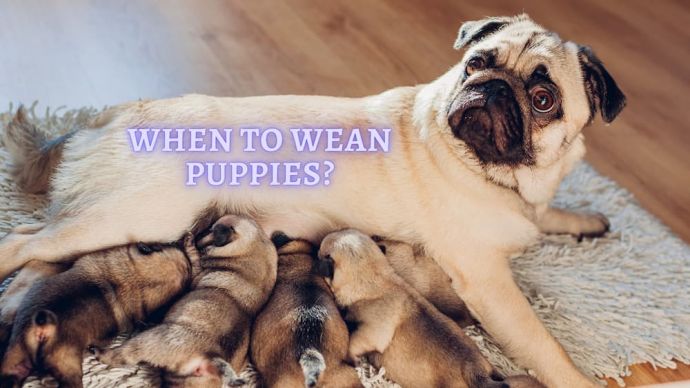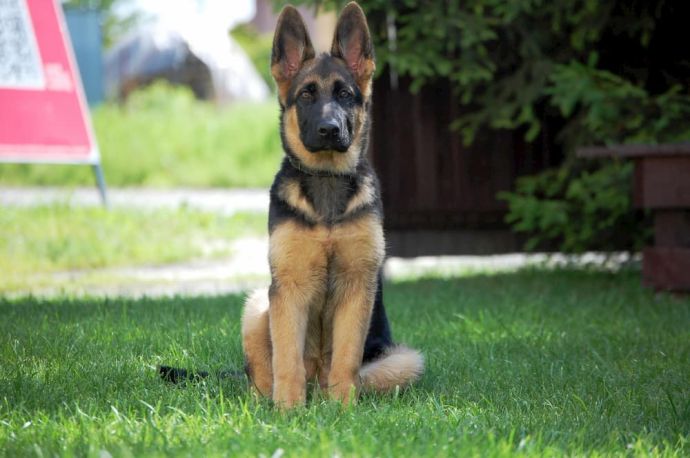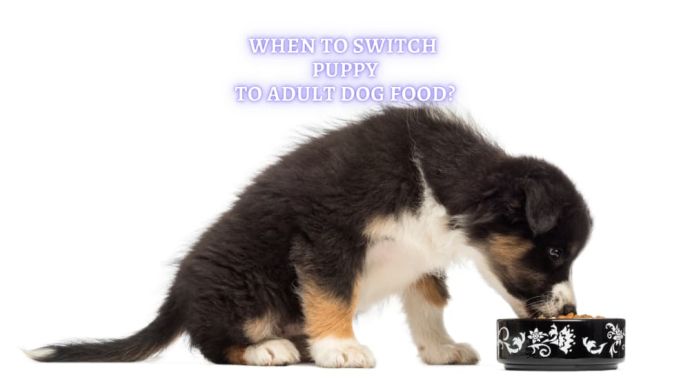Puppy Proofing Home: How to Puppy Proof your House?
Written by:
Author: Casey Fenn
Casey Fenn has 3+ years of experience in writing content. He lives in western North Carolina with his wife, four children, and an assortment of farm animals — including a dog, twenty chickens, a handful of quail, and one milk cow. Casey specializes to write articles in Dog Care, Cat Care, and Tips for Aquarium Owners.
View all 10 articlesLearn about our editorial process and veterinary review board.
Viewed: 193
Updated on: 08/10/2022
When you bring a new puppy home, you probably have a lot of things on your mind. You’ve got supplied to buy, routines to figure out, and more. But you may not have considered all the details regarding how you’ll prepare your home for that puppy. After all, puppies can get in a lot of trouble, whether chewing on cables, drinking out of the toilet, or tearing up furniture.
If your home isn’t prepared for your new puppy, you may be ready to send him outside before the week. But it doesn’t have to be this way. You can prepare your home for your new dog so that everyone is happy and nothing gets damaged. Here are some tips for puppy-proofing your home.
How do you Puppy-Proof cables?
You may not think about the dangers that electrical cables pose your new pet. But if your puppy gets curious about loose cords and takes a big bite down into them, it can be dangerous for its health. A puppy can be shocked, burned, and even killed. And even if your puppy is okay, chewed-up cables can be expensive to replace.
So, what can you do to keep your pet and cables safe?
1. Out of Sight, Out of Mind.
If your new puppy doesn’t see those delicious-looking cables, he won’t be tempted to chew on them. So, before you bring your new pet home, walk through your house looking for wires and cords. Note any that seem obvious and take the following steps to move them out of your pet’s field of view:
- Hide them behind beds, desks, couches, or other large pieces of furniture.
- Use cable ties to attach loose cards to desk legs or other stable anchors. Pets are much more likely to chew on cords that can be yanked, pulled, and twisted.
- When possible, use rugs to hide cords from view.
- Depending on the kind of card you’re looking to conceal, you may be able to run them through the drywall of your home. However, this will only work if you need to conceal something that’s permanent.
- Look for opportunities to raise cords off the ground. You can use wire molds to run cords up a room’s corners or along its baseboards. And if you’re really creative, you can even design interesting patterns and wall art with the help of small cable brackets.
- If there’s simply no way to hide one of the cords in your home, you can purchase a deterrent spray and apply it to the cords, ensuring that your puppy and your cable-stay safe.
- Finally, put charging and other detachable cords away. If you leave cords like that laying around, you’re asking your puppy to destroy them.
2. Give Something to Chew
In addition to removing loose cables from your puppy’s field of view, it’s essential to provide him with toys that he can chew on. Chewing on stuff is part of your dog’s instincts. So, get some chew toys or dog bones, keep his mind off the cables, and be on something a little tastier.
READ MORE: Best Toys For German Shepherds
How do you Puppy-Proof a bathroom?
According to statistics, the bathroom is the second most dangerous room in your house (behind the kitchen). And this doesn’t just apply to humans. The bathroom can be a scary place for your dog as well. Just think of all the hazards: razor blades, electrical cords, dangerous chemicals, and slick surfaces.
So, how can you keep your dog safe in the bathroom? Here are a few tips…
1. Keep Your Toilet Lid Down
Dogs drinking out of the toilet may be a cliché, but it’s true. Toilets provide an easy place for thirsty puppies to satisfy themselves. Though it should come as no surprise that it’s not the healthiest way to go about it.
Unless you clean your toilet on a very regular basis, your pet could pick up E. coli or other harmful bacteria. And if you do wash your toilet regularly, then he might ingest dangerous chemicals. Either way, you should keep a lid on your toilet, so your puppy is protected.
READ MORE: How to train Dog to use Toilet
2. Keep Dangerous Products Off the Ground
Bathroom cabinets are often filled with dangerous products for puppies – from cleaning chemicals and razors to bobby pins and ponytail holders. A curious dog can easily stumble into a dangerous treasure trove like that and wind up needing a trip to the emergency room. So, either keep your cabinet doors secured with a child-proof lock or move the riskier material to a higher cabinet where it won’t tempt your new puppy.
3. Remove Rugs, Trash, and Hampers Until Your Puppy is Trained
When your puppy walks into your bathroom, he feels like a kid in a candy store. There are rugs to chew on and use as a pee pad, trash to scatter around the room, and hampers to knock over and pull dirty clothes out of. Unless you can move some of those temptations off the ground, it’s probably a good idea to eliminate them from your bathroom until your puppy is trained. Once he starts making progress, you can begin introducing them back, one at a time. [1]
READ MORE: Best Affordable Dog Food
How do you Puppy Proof your Furniture?
Furnitures make a great target for young dogs that want to chew, scratch, and cause mayhem. That’s why you shouldn’t leave your furniture unprotected, especially when your new puppy is first getting acclimated to his new home.[2]
So, how can you keep your furniture in tip-top shape?
1. Cover Your Furniture if Possible
Hearing the phrase ‘furniture cover’ may conjure up memories of long visits at your grandma’s house, but it doesn’t have to. Dozens of contemporary styles today can complement your furniture while providing added protection from curious puppies.
According to guide on Porch, if you don’t want to spend money on an actual ‘cover’, you can always use blankets to cover your sofa. After all, blankets are much easier to clean and replace than the upholstery on your loveseats, couches, and chairs.
2. Take Advantage of No Chew Spray
By using a deterrent spray (or diluted apple cider vinegar), you’ll be more likely to keep your puppy off of your valuable furniture. And since it’s cheap and easy to use, it’s a great option while your new dog is still learning what he can and can’t do around the house.
3. Keep Your Puppy Groomed
One of the ways you can keep your furniture in great condition is simply by keeping your puppy groomed. Untrimmed hair is more likely to shed, covering your furniture with a thin layer of unwanted fur. And if you let your puppy’s nails grow out, they’ll be much more likely to tear into your furniture’s fabric, whether leather, cloth, or otherwise.
So, keeping your puppy groomed isn’t just good for his appearance and health, it can also help keep your furniture looking better, longer.
4. Close Off Formal Rooms
If you have a formal living or dining room, you may have invested in more expensive furniture. If that’s the case, you may want to use a gate to keep those rooms off-limits, especially while your puppy is still learning your expectations. Sometimes, the best way to puppy-proof your furniture is simply to keep him away.
READ MORE: Tips for New Puppy Care
Yes, You Can Puppy-Proof Your Home
A puppy-proofed home is a happy home. By following the above steps, you’ll ensure the safety of your new dog and home and your sanity. With only a little preparation, your home can be ready to receive your new puppy, so you can enjoy him without worrying about any havoc he may or may not wreak. Finally, when you prepared everything, you can celebrate the new life stage with your puppy together!
Article Sources:
- Chemello, Agostina. “Pet-Proofing 101: Making a Safe Haven for Your New Pet.” Porch, the Home Services Platform, 14 July 2020, porch.com/advice/pet-proofing-101
- Maria Gatea. “Pet Parents Day 2021: 6 Simple Ways To Make Your Home Pet-Friendly.” STORAGECafé Blog, 21 Apr. 2021, storagecafe.com/blog/pet-parents-day-2021-make-your-home-pet-friendly/.
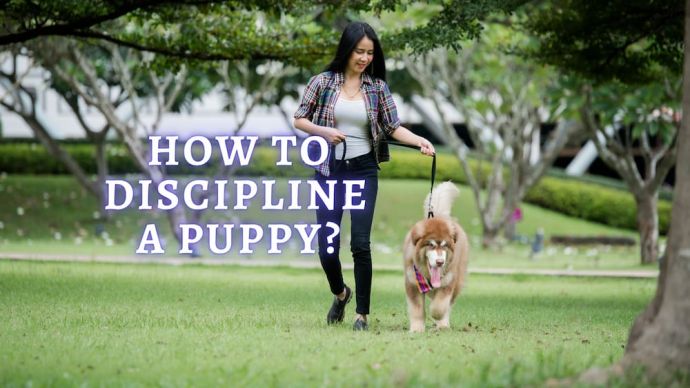 Puppy Care How to Discipline a Puppy? Strategies to Teach Your Puppy Proper Behavior
Puppy Care How to Discipline a Puppy? Strategies to Teach Your Puppy Proper Behavior - 172
- 0
 Dog Veterinary Tips Why is my Dog throwing up: Causes and Preventing (Veterinary Advice)
Dog Veterinary Tips Why is my Dog throwing up: Causes and Preventing (Veterinary Advice) - 23424
- 5
 Dog Care Why Is My Dog Bleeding From Its Butt? Causes and treatment of rectal bleeding in the dog
Dog Care Why Is My Dog Bleeding From Its Butt? Causes and treatment of rectal bleeding in the dog - 22075
- 0
 Dog Care My Dog Keeps Scratching His Mouth: Reasons Why Your Dog Scratching Face
Dog Care My Dog Keeps Scratching His Mouth: Reasons Why Your Dog Scratching Face - 17560
- 1











